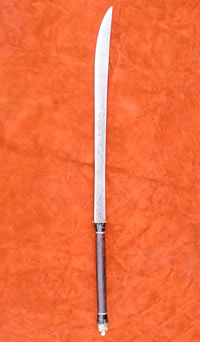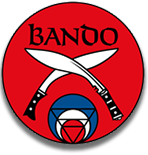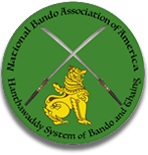 Dha or edged and point based systems include a wide range of lengths and styles of cutting and puncturing weapons. These include:
Dha or edged and point based systems include a wide range of lengths and styles of cutting and puncturing weapons. These include:
- Swords:
- Long Sword – This is a two handed 4 feet or longer sword as might be used by royalty or the military.
- Single Dha – Bando includes a variety of tribal systems using a short sword with or without a point. Some tribes “disdain the point.” A farmer’s dha may not have a point as it is largely used for slashing in agriculture.
- Double Dha – There are systems that use two swords simultaneously that travel in parallel or sequential paths.
- Daggers:
- Medium dagger – This is a short sword about 18” long.
- Military dagger – The K-bar and similar knives are about 10” to 12” long. Also called the dha dagger and may be on the same sheath as a longer dha.
- Hand knife – This is a short knife that protrudes from the fist such as an eagle claw or a thumb knife. The accessory knives that accompany the kukri are in this category.
- Kukri:
- Regimental Kukri – a heavy 3 foot long weapon used for ceremonies
- Officer’s kukri – smaller kukri about 12”
- Enlisted kukri – larger and heavier, about 12-16” long
The Gurkha Kukri is of special interest to Bando. The ABA teaches Gurkha kukri systems that were passed down during WWII. These were outside of the British manual of arms and were passed through various masters in military units. The crossed kukris represent the meeting of the ancient west (Greece) and the modern east (Burma, India, China, and Japan). The kukri has nine parts that are systematically taught as weapons, including the scabbard and accessory knives. Members of the ABA have continued this tradition by training modern Gurkha units in the nearly forgotten uses of the kukri. Gurkhas have used this terrifying weapon in wars throughout history and gained the respect of enemies and allies.


